If you are looking wholesale lighting solutions, click here.
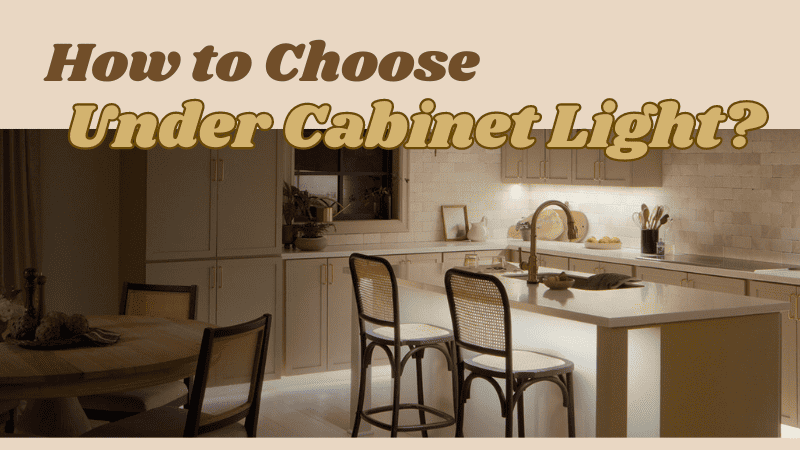
Adding little details to your kitchen, such as using under cabinet lights can make it look appealing and help you do work easily. A cost vs value report shows you can recoup about 60% of the cost on resale of a remodeled kitchen.
Different types of lights are available for various purposes. You need to take care of several factors while picking the most suitable option for your place. Therefore, we have written a detailed guide on how to choose under cabinet lighting.
Keep reading to decide what type of lights you need to install.
As the name indicates, cabinet lighting is installed under cabinets and shelves to provide focused lighting for the work area. Most commonly, they are installed under the kitchen cabinets on their inner side to illuminate the countertop.
These lights are easier to install directly where needed, give your space an aesthetic look, prevent light loss, and increase the resale value of your home. You can also install them under cabinets in your office to lighten up the work area and prevent shadow.
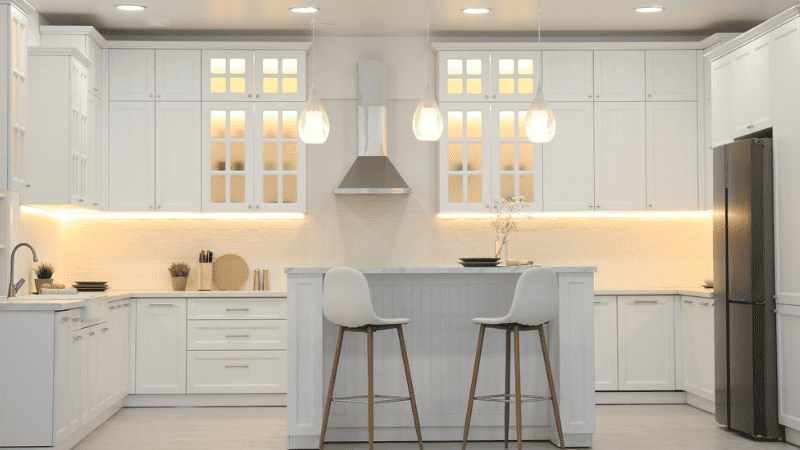
Here are some popular types of cabinet lighting:
Puck lights are one of the most popular options for under-cabinet lighting. They are round shaped similar to a hockey puck. Usually, they are mounted onto the underside of the cabinets and provide a rectangular beam of light.
This makes them ideal for highlighting decorative items under them and offering focused light for work. If they are installed at a distance, the area between them will be dimmer. So, you need to install them closer to each other for an evenly illuminated surface.
Typically, puck lights use xenon and halogen bulbs. Now, LED puck lights have become popular due to the convenience they offer. LED puck lights are operatable with batteries, freeing yourself from the hassle of installing wires. These lights consume less energy and offer adjustable lighting.
Tape lights or strip lights are another option to evenly illuminate the under-cabinet area. These lights come in the form of LED strips or ribbons in different colors and brightness.
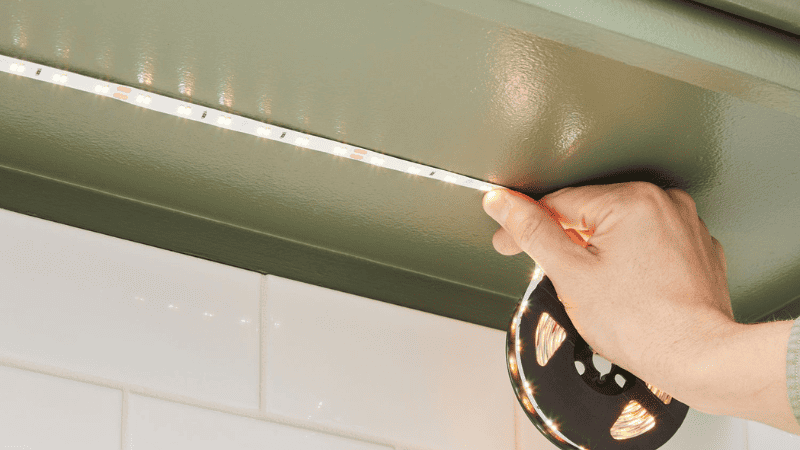
Tape lights can be easily installed on any surface with the adhesive material on them. They are highly customizable and offer adjustable brightness levels. Moreover, strip LED lights are flexible, making their installation around bends and corners easier.
Light bars come in the form of long rods and can be installed under the cabinets. Traditionally, fluorescent light bars are used but they contain mercury which is a toxic metal even in small amounts. This makes them harmful to handle in case of breakage.
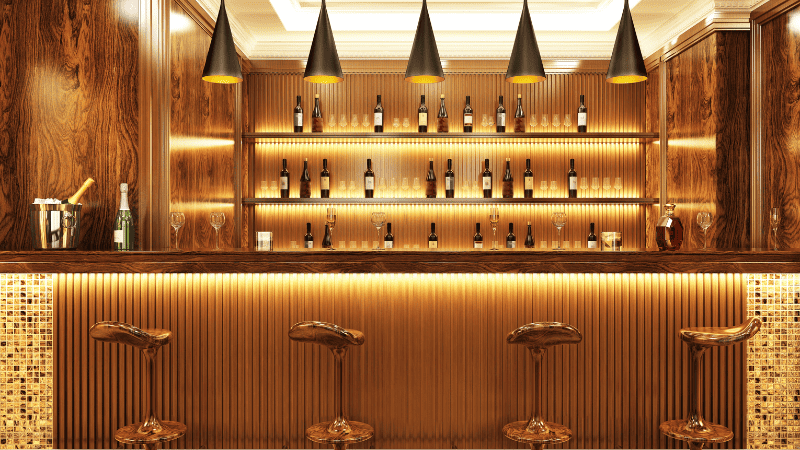
Therefore, LED bar lights are now dominating the market because of are environmentally favorable and a cost-effective solution. Generally, they are available as direct wire, which means you can simply turn them on by plugging the fixture’s wire into an electrical outlet.
Xenon bulbs and fluorescent lights have been used for under cabinet lighting but they have some drawbacks. So, LED lights are recommended to be used in under cabinet lighting because they have the following advantages:
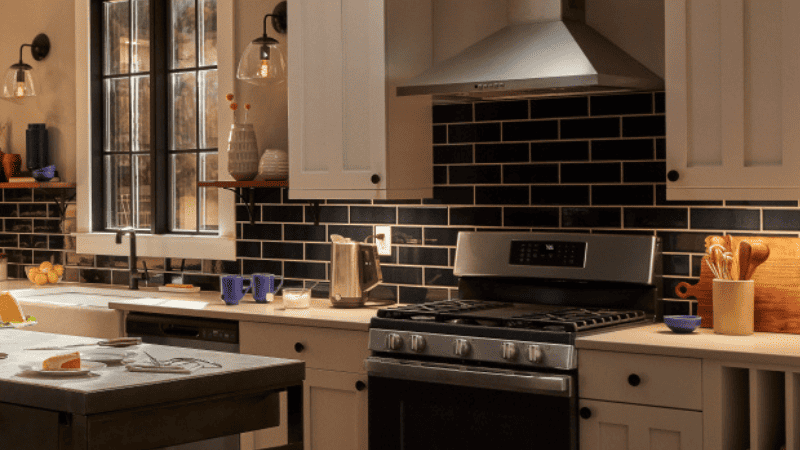
Picking the right under-cabinet lighting can be tricky with all the options available. So, the following are some factors to help you determine what kind of lighting is most suitable for your requirements:
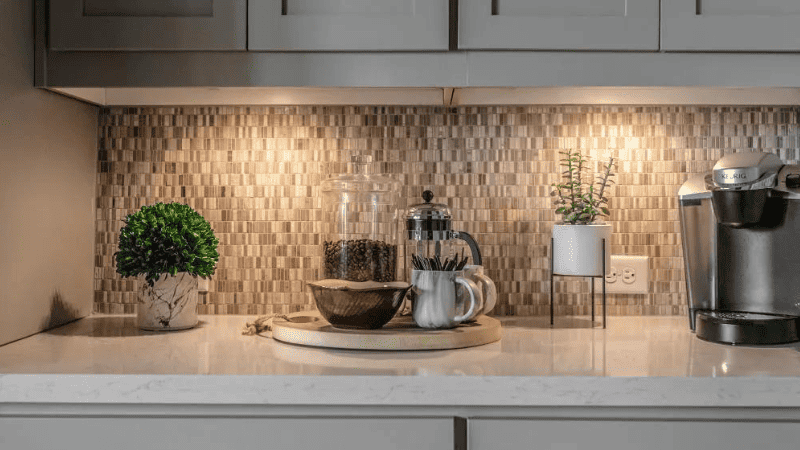
As we have discussed, LED bulb lighting is the ideal option among incandescent bulbs, fluorescent lights, xenon lights, and halogen bulbs.
So, if you want focused lights over a small area puck lights can be your go-to option. Puck lights give a spotlight effect to the object underneath them by illuminating it with their rectangular beam.
If you want to linearly lighten up a comparatively larger area on your countertop, light bars are the best option. They provide sufficient lighting for work, and you don’t need to install a lot of them because they come in a decent length of up to 50 inches.
For larger areas, tape lighting works best because you can get a flexible 16-foot strip of those lights ready to be pasted anywhere you want.
Understanding the term ‘lumen’ is important to figure out what brightness levels of under-cabinet lighting you need. Lumen is the amount of light emitted and it measures the brightness level. Brighter lights have a higher lumen output and vice versa.
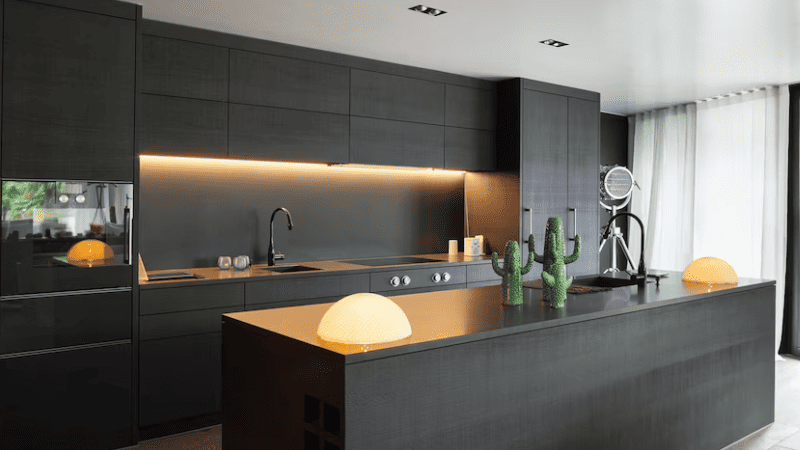
Brightness requirements may vary depending on the height of the cabinet and its size. Similarly, the material underneath the cabinets also determines the brightness level your space needs. For example, shiny countertops require a lower lumen output compared to matte surfaces that absorb light.
Here is a quick guide on choosing the right lumen output for different purposes:
You can get an idea about choosing the color of under cabinet lighting by looking at the color temperature that is expressed in kelvin.
The following table mentions color temperatures with their appearance:
| Color Temperature (K) | Appearance | Best Usage |
| Less than 2000K | Candlelight like dim yellow light | Ideal for creating an aesthetic look on kitchen countertops |
| 2700–3000K | Known as 'warm colors'. Yellowish light | Can be installed under cabinets in the kitchen with overhead lights of brighter colors. |
| 3100K-4500K | Neutral white light. Brights light | Best for various spaces and purposes, such as living rooms and kitchens. Can be used for overhead lights |
| 4600K-6500K | Known as 'cool colors' with a bluish-white appearance | Best for workspace |
| Above 6500K | Bright blue light mimicking daylight | Ideal for task lighting |
Color temperatures affect our mood and productivity. So, you can choose them based on your work in the particular space.
Yellow color creates a cozy environment, so you can use it in your kitchen, bedroom, and living room. Bright blue light improves alertness, making it the best choice for the work environment.
IP Rating is another factor to consider while choosing the best under-cabinet lighting. It stands for Ingress Protection Rating and measures the degree to which an electric enclosure, such as a lighting fixture, can resist and block foreign bodies like dust and water.
It is expressed as IP followed by a two-digit number, like IP65. A higher number indicates more resistance and vice versa.
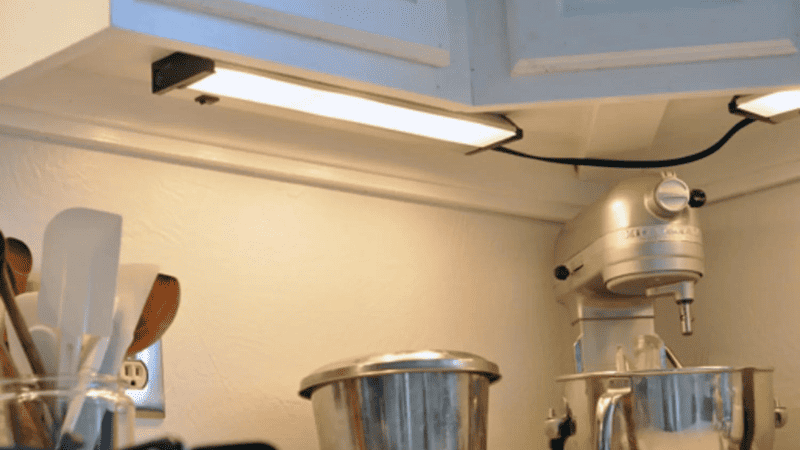
National Fire Protection Association (NFPA) develops codes and safety standards for buildings to minimize the risk our fire outbreaks.
Nationally Recognized Testing Laboratories (NRTLs) develop tests around the safety standards. Products that pass those tests get the safety certification seal. Having this seal shows the lights have been tested for fire and electrical safety.
Some common labs issuing the certificates include ETL (Electrical Testing Laboratories), CSA (Canadian Standards Association), and UL, which is the most recognized among all.
While shopping for the under cabinet lighting, make sure they have the safety certification logo on them.
Here are some tips on designing your under-cabinet lighting:
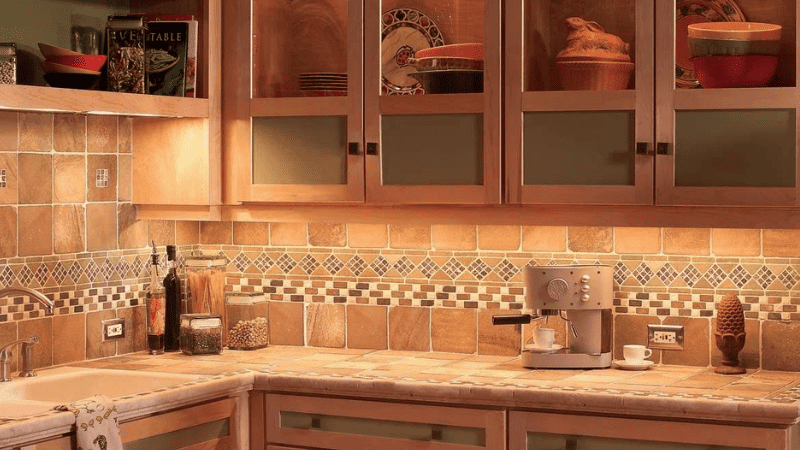
If you are using puck lights for under cabinet lighting, you need to place them closer to each other for linear illumination to avoid dimmer spaces between them.
However, bar lights can be placed underneath cabinets and their size varies depending on the space of your countertop.
Tape lighting gives a linear illumination. You can cut it to your desired length and paste it wherever you want.
The placement of under-cabinet lighting depends on its purpose. If you want to highlight a decorative item underneath them, use puck lights adjacent to the wall. For lighting up your countertop, try installing the lights in the middle of the cabinet underside.
Under cabinet lighting can run on three types of power sources; plug-in, direct wire, and battery. Here’s a quick introduction to all these types:
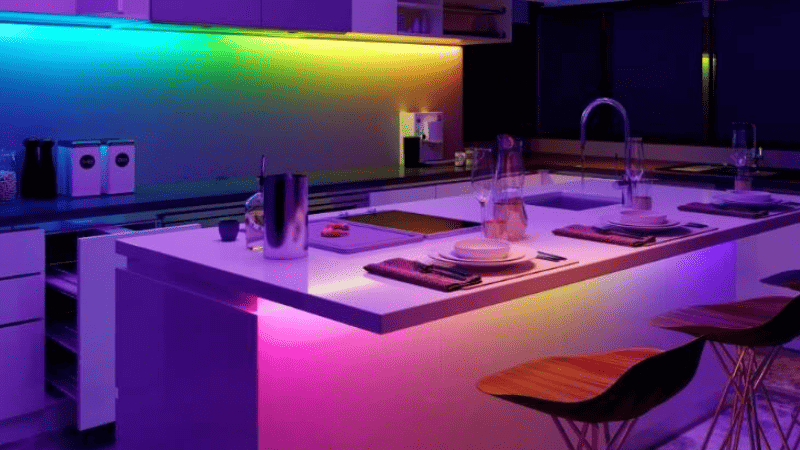
Plug-in under cabiner lights are easy to install because they can be turned on simply by plugging in the fixture’s cord.
You can operate battery-powered lights with a disposable battery or a USB cable. Using batteries can be an expensive option, so you can use them to lighten up your space on special occasions.
Wiring of direct wire or hardwired under cabinet lights is installed inside your wall, typically during construction. This can be the most suitable option as you can turn on/off these lights with a wall switch.

LED lights come with dimmers, allowing you to change the brightness level of your under-cabinet lighting based on your mood or the task performed. Mostly, puck lights are wireless and come with dimmers that can be operated by a remote control.
Fixtures of direct wire lights often contain dimmers, controllable through a remote control. Sometimes, the fixtures have a switch with a dimming option. If you are using LED lights, make sure to choose dimmers that are compatible with them to maximize the bulb life.
Like every appliance, LED lights can last longer and keep functioning well if you take care of them. Here are some maintenance tips for your under-cabinet lights:
Dust particles inside and outside the lights can cause bulb shortages. To make your lights last longer, ensure dust does not accumulate on them. So, clean your lights regularly.
For optimum cleaning, add a mild detergent in lukewarm water and damp a towel in that to clean lights and fixtures. Make sure the lights are water-resistant. Cleaning this way will elevate the look of your space and won’t block the light due to dust.
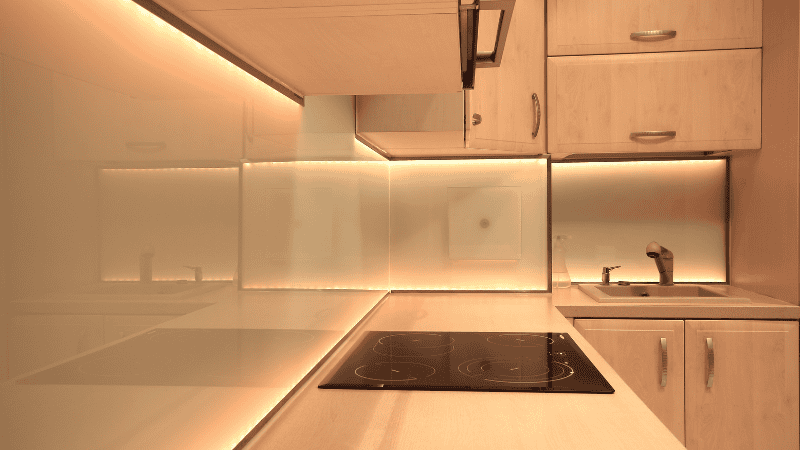
A medium brightness level of 200 – 500 lumen/ft is okay to give your countertop an aesthetic look. However, if you need more brightness or you are using under-cabinet lighting as the primary source of light, go for 500-1000 lumen/ft.
You can choose from three types of lights to put under kitchen cabinets; bar lights, puck lights, and tape lights. For creating a spotlight effect, use puck lights. However, for linearly illuminating the space underneath the cabinets, install bar lights or tape lights.
A neutral bright white light having a color temperature between 3100K-4500K is most suitable for under kitchen cabinets because it helps you perform your tasks easily while uplifting the look of your space.
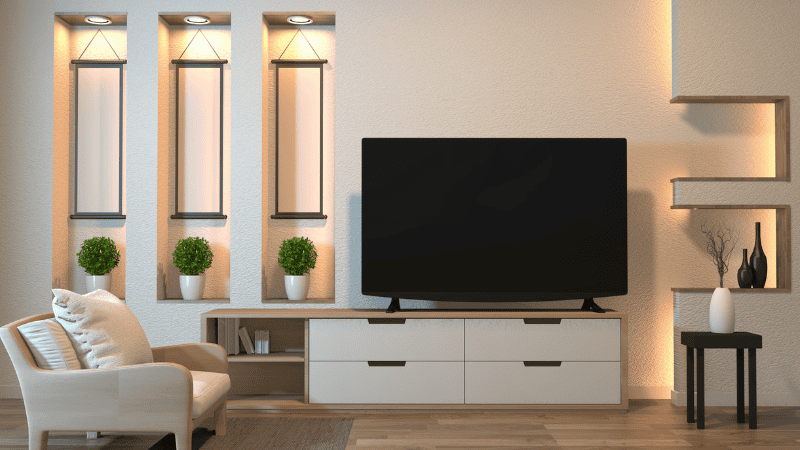
LED strips have a 120° beam angle. Install them under the front edge of the cabinets or in the middle of their underside. If you put them on the backside adjacent to the wall, it would cause light loss.
LED strips are a good option for under cabinet lighting because they are easier to install with the adhesive material on them, come with a remote control dimming system, provide linear lighting, and are cost-effective.
Installing under-cabinet lighting not only uplifts the look of your kitchen but also helps you perform your tasks easily by reducing strain on your eyes. You can choose different types of lighting based on your needs and control their brightness depending on your mood.
While purchasing under cabinet lights, make sure they have the desired color temperature, have a good IP Rating, and come with a safety certification. Go for LED lights for maximum benefits, such as reduced bills, a longer lifespan, and improved brightness.
Risun is the one-stop lighting supply in China. We offer lighting solutions for professionals and wholesalers. This means you can get indoor lighting solutions, outdoor lighting options, commercial lighting fixtures, lighting bulbs, and even ceiling fans from one reputable dealer.
With over 13 years of experience at our hands, we understand the North American market inside out. Therefore, you can get customized solutions for the latest trends in the LED lighting space.
Rely on Risun for quality under cabinet LED lighting solutions for your kitchens and other indoor spaces. For more information and to explore our range of products, please don’t hesitate to contact us.
Comprehensive Lighting Solutions for MRO Wholesalers and Professionals
send your inquiry
Hi, I'm the author of this post, and I have been in this field for more than 15 years. If you want to wholesale lighting fixtures or lighting related product, feel free to ask me any questions.
Learn More >>Download our catalog to view all of our lighting products.
Ready to get started ?
Send Your InquiryOur team will get back to you promptly

please
download
Get notified about new products
Our team will get back to you promptly!
Add your first comment to this post